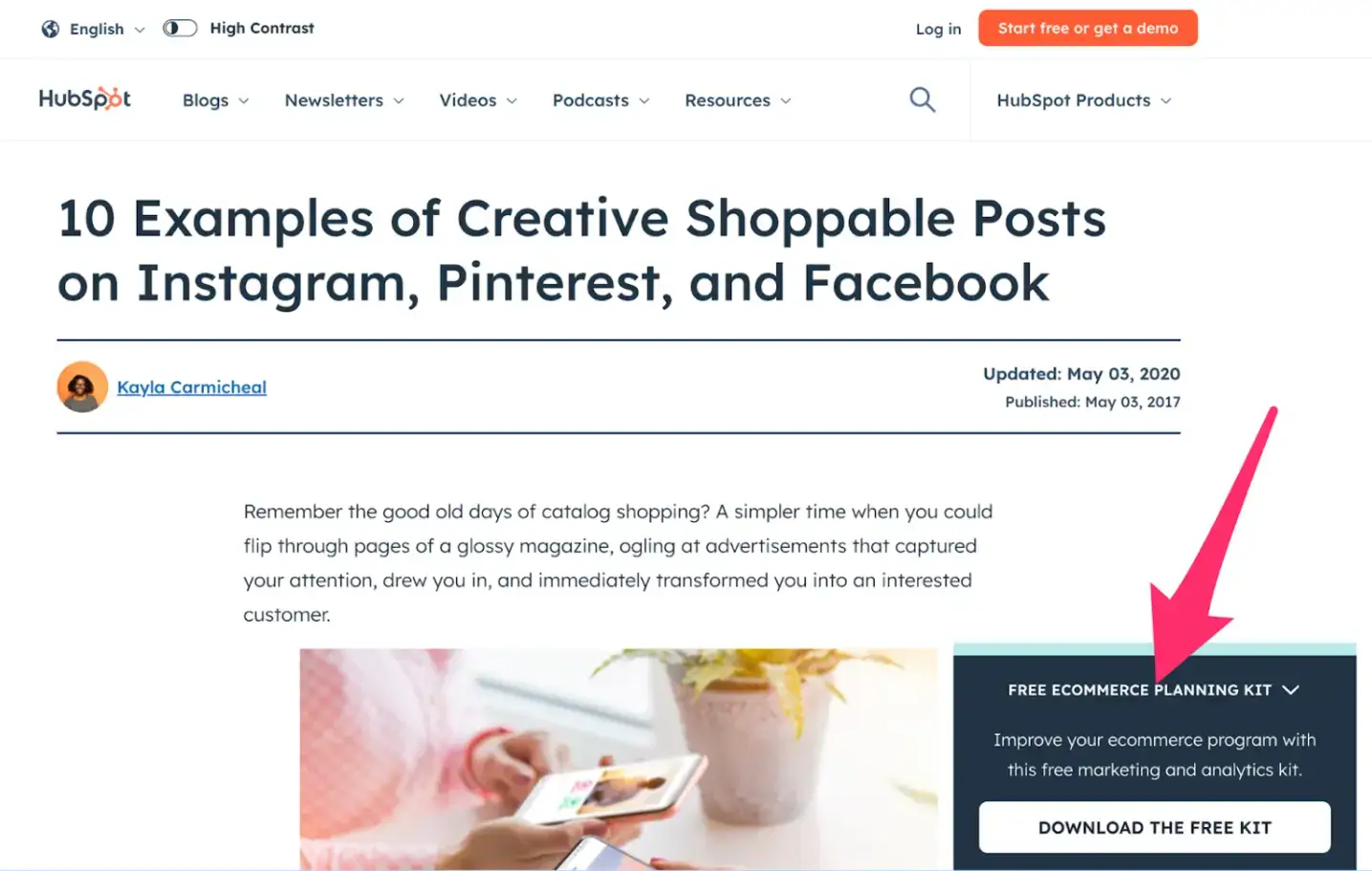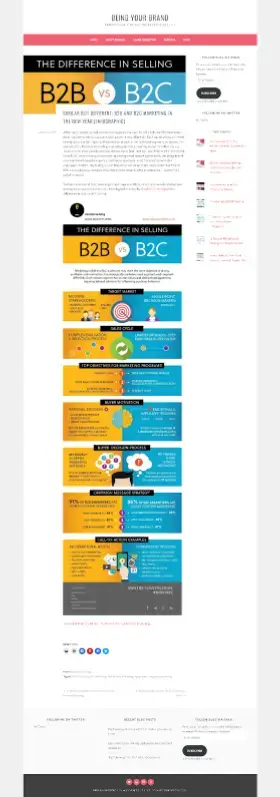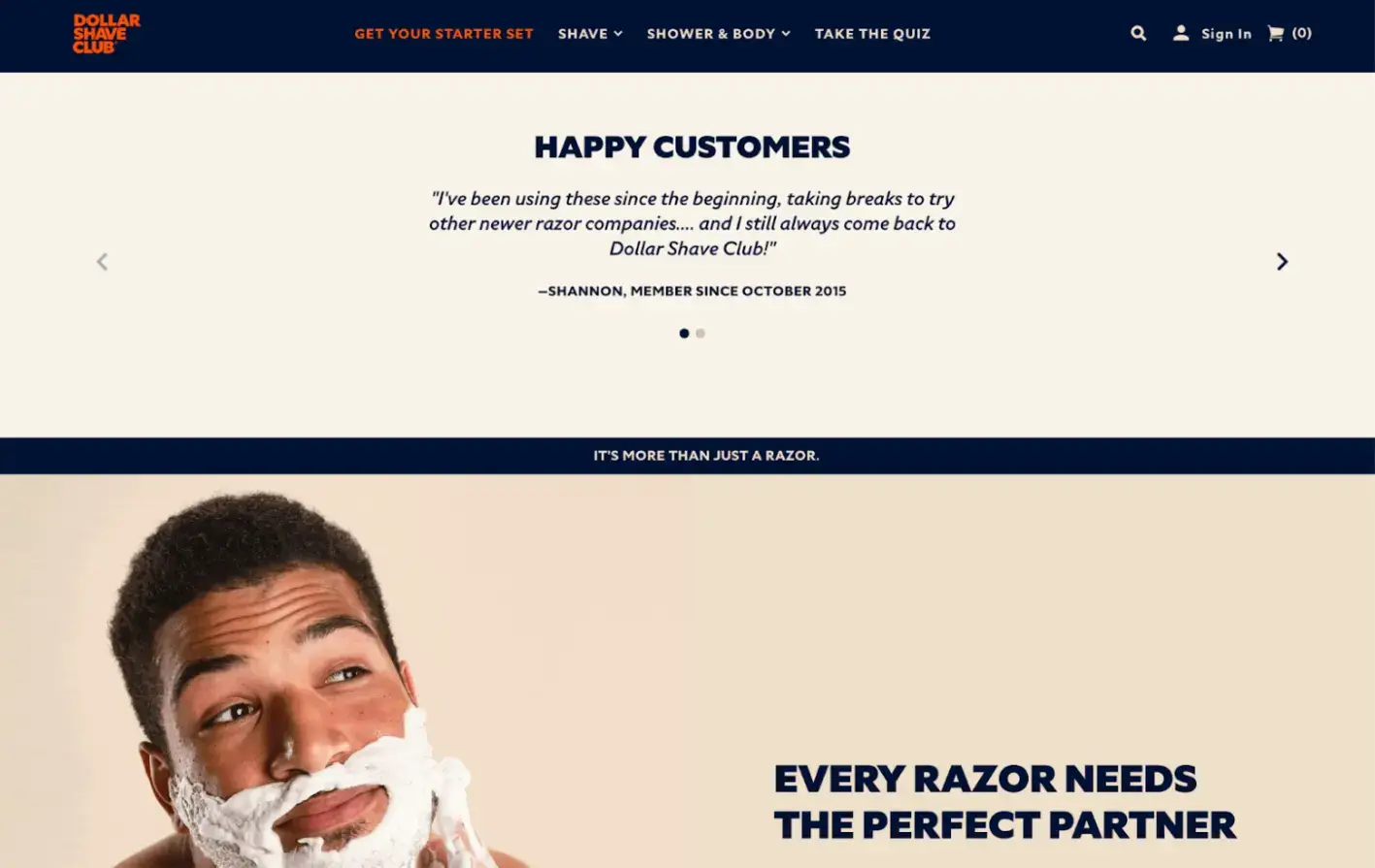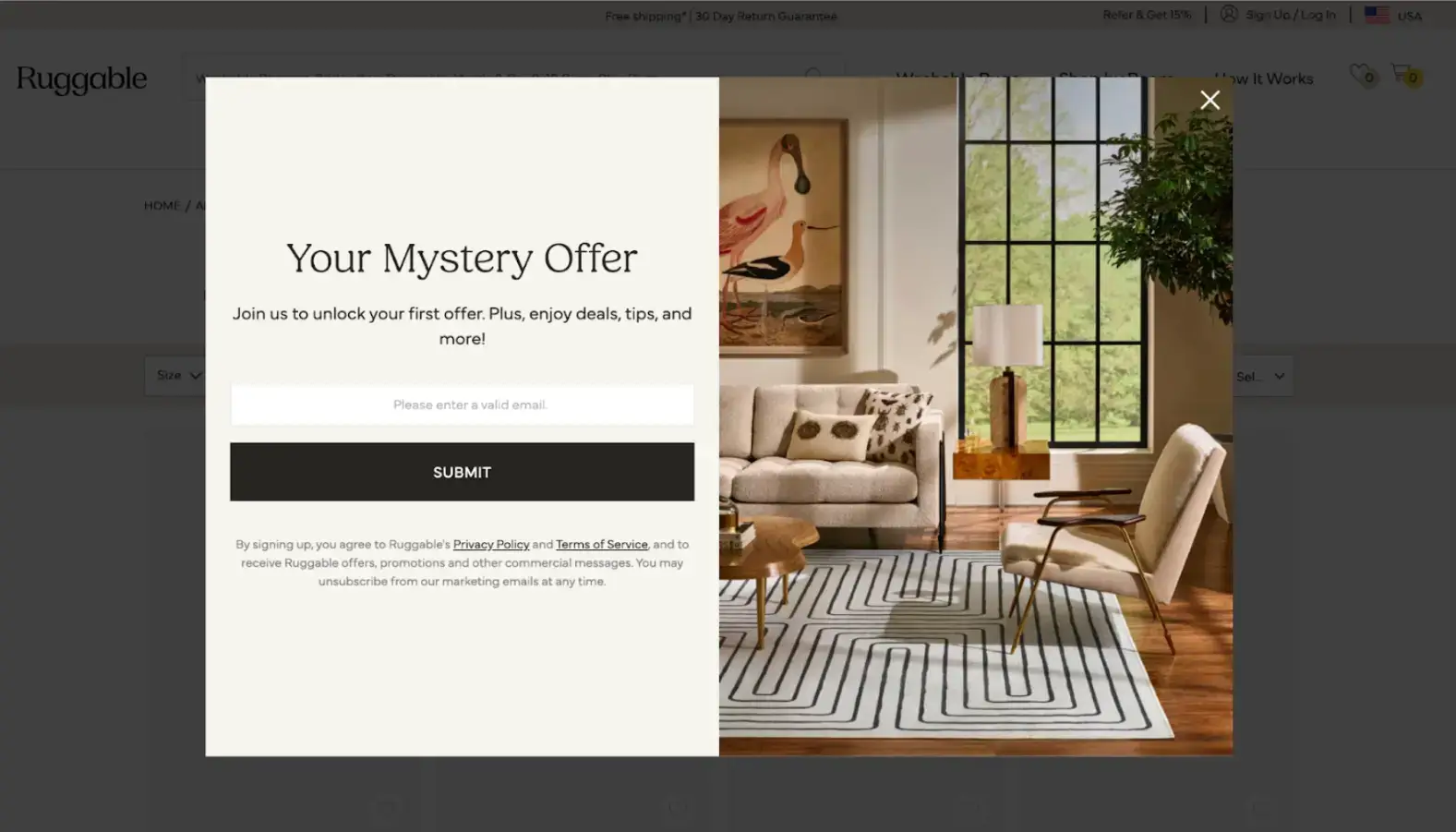We live in an era where a website is the hub for almost all businesses, be it offline or online, B2B or B2C. And if generating leads and driving more revenue is your goal, your website is one of the first places you must look into.
That said, we see so many “dead” websites around us today. You know what I’m talking about—walls of text, ads that interrupt the user experience, inconsistent branding, and content that is just bland.
With this kind of website, it is very difficult to generate traffic and leads. If you are struggling with the same, this guide is just for you.
Skip to:
- Why is Website Engagement Important for Lead Generation?
- How to Increase Website Engagement for Lead Generation?
Read through to understand how you can transform your website to amp up engagement, ultimately resulting in better lead generation. You’ll learn why website engagement is important for lead generation.
And 8 tips on how you can increase website engagement to drive more conversions. Let’s get on it!
What is Website Engagement?
Website engagement is a measure of how actively visitors interact with your site's content and features.
It goes beyond simple metrics like traffic or page views. It focuses instead on the quality and depth of user interactions.
Think of website engagement as a conversation between your site and its visitors.
If you are a brick-and-mortar business, engaging with customers who visit your shop would be of paramount importance to you, isn’t it?
Similarly, your website is your portal to thousands or millions of potential customers who may be interested in visiting your site. And it is possible to captivate them with a brick-and-mortar kind of experience, by tweaking it for higher engagement.
Just like in a real conversation, engagement is about more than just talking; it's about listening, responding, and creating a meaningful exchange.
When visitors engage with your site, they're not just passively consuming information; they're actively participating in the experience.
For example, let's say you have a blog post about the benefits of your product.
If visitors simply skim the post and leave, that's low engagement. But if they read the entire post, leave a comment, and then click through to your product page and sign up for your newsletter, that's high engagement.
Why is Website Engagement Important for Lead Generation?

Now you may be wondering how lead generation is linked to website engagement. Well, here are some of the many reasons why:
- Higher conversion rates: Engaged visitors are more likely to convert into leads or customers. When visitors actively interact with your site, they're demonstrating interest in your brand and offerings. This interest can be nurtured and guided toward a desired action.
- Improved user experience: High website engagement is often a sign of a positive user experience. This positive experience builds trust and credibility, making visitors more receptive to your lead generation efforts.
- Better SEO (Search Engine Optimization): Search engines like Google prioritize sites with high engagement, as it's seen as a sign of quality and relevance. By keeping visitors engaged, you can reduce bounce rates, increase time on site, and improve other engagement metrics. All of this can positively impact your lead generation rate.
- Enhanced retargeting: Engaged visitors are also more likely to respond to retargeting campaigns. By using website visitor tracking and tracking engagement, you can identify visitors who have shown interest in your brand but haven't yet converted. You can also use lead scoring techniques to better target visitors.
- Competitive advantage: In today's digital landscape, simply having a website isn't enough. By focusing on engagement, you can differentiate your site from competitors, provide a superior user experience, and, ultimately, drive more leads and sales.
How to Increase Website Engagement for Lead Generation?
1. Use gated content upgrades
One of the most effective ways to increase website engagement and generate leads is by using gated content upgrades.
This strategy involves offering additional, premium content to visitors in exchange for their email addresses. You can capture these email addresses and re-engage them using email automation tools.

Gated content upgrades can take many forms, such as downloadable guides, templates, checklists, or even access to exclusive webinars or video tutorials. The key is to offer something of high value that directly addresses your target audience's pain points or interests.
For example, if you're a marketing agency, you could offer a comprehensive guide on "10 Proven Strategies for Boosting Social Media Engagement" as a gated content upgrade.
Visitors who are interested in this topic would be more likely to provide their email addresses to access the valuable resource.
To maximize the effectiveness of gated content upgrades, it's essential to promote them strategically throughout your website. This could include using exit-intent popups, strategically placed calls-to-action (CTAs) inside relevant blog posts, or even dedicated landing pages.
By offering valuable, gated content upgrades, you not only increase website engagement but also provide visitors with a reason to stay and interact with your site. But you also generate high-quality leads that have already demonstrated interest in your offerings. It’s a win-win!
2. Build relevant tools and calculators
We all love tools and calculators that are useful, especially when they are free to use.
These interactive resources not only keep visitors engaged on your site but also position your brand as a helpful and authoritative resource in your industry.
For example, if you're a financial services company, you could create a present value calculator or a mortgage calculator that helps potential customers estimate their monthly payments based on different factors.
You can promote this mortgage calculator inside relevant blog posts on your homepage and drive leads on autopilot from it.

3. Use visual content marketing
Today, attention spans are shorter than ever. And visual content has become a powerful tool for engaging website visitors and guiding them to take a desired action.
By incorporating visually appealing elements as a part of your marketing plan, you can capture and retain visitors' interest more effectively.
One effective strategy is to create visually stunning infographics that present complex information in an easy-to-digest format. Another approach is to incorporate high-quality product or service images and videos throughout your website.
These visuals can help visitors better understand your offerings and envision how they can benefit from them.
Of course, nothing can beat high-quality visual content that adds value, shares case studies, video testimonials, or even product demos.
Interactive content, such as quizzes, polls, or interactive videos, can also be a powerful tool for increasing website engagement.

4. Target the right traffic sources
Increasing website engagement and generating leads is not just about implementing the right strategies on your site. It's also about attracting the right visitors in the first place.
Imagine bringing in the wrong kind of visitors to your site—of course, they are not going to engage or convert into leads.
One effective approach is to leverage paid advertising platforms like Google Ads or social media ads. These platforms allow you to target specific demographics, interests, and behaviors.
This ensures that your ads are shown to the most relevant audiences. You can also gain additional insights into your audience using analytics offered by Instagram, Facebook, LinkedIn, etc.
Another strategy is to focus on organic search engine optimization (SEO) efforts.
The key to attracting the right organic traffic through SEO is to find the right keywords for your website. Targeting the right keywords will help you target the people looking for solutions that align with your offering.
You can also consider partnering with relevant industry influencers or publications to reach their engaged audiences. You can guest post on popular blogs or get featured in industry publications.
Again, the key here is to partner with people/brands who share an audience with your target persona. This way, you can tap into existing communities of potential customers who are already interested in your niche.
5. Share case studies and testimonials
One of the most powerful ways to increase website engagement and generate leads is by sharing compelling case studies and testimonials in the form of videos from satisfied customers or clients.
These provide social proof of your brand's credibility. And also helps the visitors envision how your products or services can benefit them.
Case studies are particularly effective for demonstrating the tangible results and value you've delivered to previous customers.
Compelling case studies sets you apart from your competitors, resulting in better engagement and conversion rates. Testimonials, on the other hand, offer a more personal and emotional connection with potential customers.
By featuring quotes or video testimonials from satisfied clients, you can showcase the real-life experiences and positive sentiments of customers.

To maximize the impact of case studies and testimonials, consider incorporating them throughout your website. This could include places such as dedicated case study pages, product or service pages, or even strategic locations like exit-intent popups or sidebar widgets.
6. Add a chatbot to your website
Everything is fast-paced today. Visitors expect immediate assistance and support when engaging with your site.
By adding a chatbot to your site, you can provide this real-time support. This way, visitors can get the queries answered, gain more interest in your brand, ultimately resulting in higher lead conversion rates.
Chatbots are AI-powered customer service assistants that can interact with visitors, answer their questions, and guide them through the sales process.
They offer a convenient and efficient way for visitors to get the information they need.
In addition to providing support, chatbots can also be used to capture leads. Chatbots can initiate conversations and offer valuable resources or discounts in exchange for contact information.
This way, chatbots can seamlessly collect leads without disrupting the user experience.

7. Incentivize with offers and discounts
Who doesn’t love perks such as discounts, free trials, or exclusive offers? Everyone wants to feel special and what better way to do it than using these tactics?
These incentives not only capture visitors' attention but also provide a compelling reason for them to take action and engage with your brand.
For example, a couple of minutes after a visitor lands on your site, you could offer a limited-time discount on your products/services in exchange for visitors providing their email addresses.
This works well, especially for eCommerce websites.
Another approach is to offer a free trial or demo of your product or service. By allowing visitors to experience the value of your offering firsthand, you can increase their engagement and interest and collect lead information.
You should also plug these incentives into strategic locations on your website, such as exit-intent popups, sidebar widgets, or dedicated landing pages. This can increase their visibility and effectiveness in driving engagement.

8. Add exit intent popups
Exit intent popups are triggered when a visitor's mouse movement or browsing behavior indicates that they are about to exit the page or website.
By presenting a targeted offer, discount, or lead capture form at this critical moment, you can re-engage visitors and encourage them to take action before they leave.
For instance, you could offer a limited-time discount on a product or service or provide access to a valuable resource in exchange for their email address.
When implementing exit intent popups, it's important to strike a balance between being persuasive and avoiding disruption to the user experience.
You should also personalize your exit intent popups based on visitor behavior or browsing history.
For instance, if a visitor has spent a significant amount of time on a specific product page, you could present an offer or discount related to that product in the exit intent popup.
Conclusion
Today, competition is fierce, and attention spans are short. Boosting website engagement is crucial for successful lead generation.
By implementing the strategies outlined in this blog post, you can create a more engaging and compelling experience for your visitors and, of course, ultimately drive more leads and conversions for your business.
Remember, website engagement is not just about increasing traffic or page views; it's about fostering meaningful interactions and providing value to your audience.
Ultimately, the success of your lead generation efforts lies in your ability to continuously analyze and optimize your website's performance. So, embrace the power of website engagement, and watch as your lead generation efforts soar to new heights.
Author Bio
Eduard Klein is an International Digital Growth Marketer, Blogger, and Entrepreneur with a global mindset. He is the founder of RocketGrowth and guides through the process of starting and growing a digital business, and riding the wave of digital technology and marketing without getting swept away.



